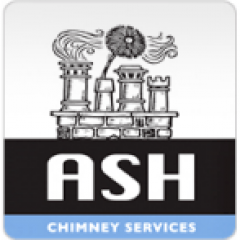Frequently Asked Questions
| Coal fire and stoves: | Twice a year, if in constant use |
| Wood fires and wood-burning stoves: | Four times a year if in constant use |
| Gas fires: | Once a year |
| Oil flues: | Once a year |
| (figures as per HETAS) |
To remove soot and thereby reduce the risk of a chimney fire. To maintain the good laminar flow of smoke up the chimney.
A properly maintained and serviced gas appliance should never produce soot. Spiders though, like gas flues and will often build their webs inside them. These webs trap insects and debris, and after a period of time, these obstructions can cause carbon monoxide to be released into the living space.
We sheet-up the area surrounding the fire and fix a thick cloth sheet over the fireplace opening. This cloth has a funnel arm through which the rods and brushes are attached. All of the soot deposits fall behind this sheet. When the sweeping is complete the sheet is removed and an industrial vacuum removes the debris.
We fit a variety of cowls to stop this happening. The basic model is of toughened mesh construction, this is wired to your chimney pot to prevent it from becoming dislodged when sweeping. Others also utilise a mesh guard to allow adequate ventilation but also incorporate a rain guard to prevent the chimney from becoming damp.
Downdraughts can be caused by several different conditions. The fire opening can often be too large for the draw of the flue, cold air in the chimney can often prevent the warm air rising, and atmospheric weather conditions can restrict the flow of exhaust gases. However, the main reason for downdraughts is the position of the property; if it is on a hillside, a steep valley or surrounded by other large buildings or trees, then depending upon the direction of the wind downdraughts can occur. We fit a variety of different cowl that counters this effect.
This is because there is smoke coming back into your room probably bringing carbon monoxide with it. There are 4 main causes:
- The fireplace is too large for the flue. The best solution is to reduce the size of the opening.
- The chimney pot/terminal is too small (narrow). Ensure that the flow of the flue gasses is not inhibited in any way. A narrow pot can cause an obstruction. Make sure that the chimney pot is the correct size for the internal flue.
- The flue is partially blocked (sooty deposits, birds nest, partial collapse). Call us to immediately to remove the obstruction and clean the flue.
- Down-draughts can also cause smoke marks, see the section on Down Draughts on the Chimney Problems page.
If a chimney is closed off and not properly vented it can get a little damp. If there is soot inside the flue this can turn into a black treacle-like substance that is very acidic. This can soak into the internal walls causing severe problems. If bad enough, it can penetrate into the rooms where it will cause unpleasant stains on the walls.
The best plan of action for a disused chimney is to fit a cap to the top of the chimney pot. This will let the chimney breath (preventing condensation), whilst keeping it dry and free from birds and other infestations. Should the chimney ever be required to be re-opened the cap can be easily removed klikkaa tätä linkkiä.
We give exact appointment times to save you waiting around. If in exceptional circumstance we are running early or late, we will phone you to make sure the revised appointment is convenient.
We have set prices for everything we do. Our rates are dependent upon the travelling involved, and the ease with which we are able to complete the work. Please call us to find out more.

